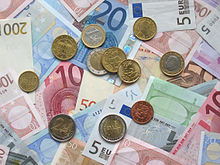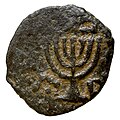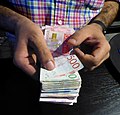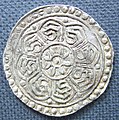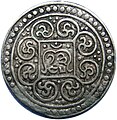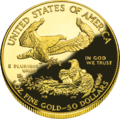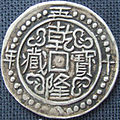Portal:Money
The Money PortalEuro coins and banknotes
Money is any item or verifiable record that is generally accepted as payment for goods and services and repayment of debts, such as taxes, in a particular country or socio-economic context. The primary functions which distinguish money are: medium of exchange, a unit of account, a store of value and sometimes, a standard of deferred payment. Money was historically an emergent market phenomenon that possessed intrinsic value as a commodity; nearly all contemporary money systems are based on unbacked fiat money without use value. Its value is consequently derived by social convention, having been declared by a government or regulatory entity to be legal tender; that is, it must be accepted as a form of payment within the boundaries of the country, for "all debts, public and private", in the case of the United States dollar. The money supply of a country comprises all currency in circulation (banknotes and coins currently issued) and, depending on the particular definition used, one or more types of bank money (the balances held in checking accounts, savings accounts, and other types of bank accounts). Bank money, whose value exists on the books of financial institutions and can be converted into physical notes or used for cashless payment, forms by far the largest part of broad money in developed countries. (Full article...) Selected article - Ancient Chinese coinage includes some of the earliest known coins. These coins, used as early as the Spring and Autumn period (770–476 BCE), took the form of imitations of the cowrie shells that were used in ceremonial exchanges. The same period also saw the introduction of the first metal coins; however, they were not initially round, instead being either knife shaped or spade shaped. Round metal coins with a round, and then later square hole in the center were first introduced around 350 BCE. The beginning of the Qin dynasty (221–206 BCE), the first dynasty to unify China, saw the introduction of a standardised coinage for the whole Empire. Subsequent dynasties produced variations on these round coins throughout the imperial period. At first the distribution of the coinage was limited to use around the capital city district, but by the beginning of the Han dynasty, coins were widely used for such things as paying taxes, salaries and fines. Ancient Chinese coins are markedly different from their European counterparts. Chinese coins were manufactured by being cast in molds, whereas European coins were typically cut and hammered or, in later times, milled. Chinese coins were usually made from mixtures of metals such copper, tin and lead, from bronze, brass or iron: precious metals like gold and silver were uncommonly used. The ratios and purity of the coin metals varied considerably. Most Chinese coins were produced with a square hole in the middle. This was used to allow collections of coins to be threaded on a square rod so that the rough edges could be filed smooth, and then threaded on strings for ease of handling. (Full article...) Selected currency - The Transnistrian ruble (alternatively rubla or rouble; Romanian: rublă transnistreană, Moldovan Cyrillic: рублэ транснистрянэ; Russian: приднестровский рубль; Ukrainian: придністровський рубль) is the currency of the internationally unrecognized state of Transnistria. It is divided into 100 kopecks. Since Transnistria is a polity with no credible international recognition and its territory is formally part of Moldova, its currency has no ISO 4217 code, and thus Transnistria cannot participate in any global card payment processing network. Cards are accepted, but only on the Russian developed MIR network. However, unofficially some Transnistrian organisations, such as Agroprombank and Gazprombank, used the code PRB, a code reserved for Puerto Rico (ISO 3166-1 country code "PR"). The Transnistrian Republican Bank sometimes uses the code RUP, a code reserved for Russia (ISO 3166-1 country code "RU"). (Full article...) Did you know -
Related portalsGet involvedFor editor resources and to collaborate with other editors on improving Wikipedia's Money-related articles, see WikiProject Numismatics. Need help?Do you have a question about Money-related content on Wikipedia that you can't find the answer to? Consider asking it at the Wikipedia reference desk. Topics– By region –
– By name –
– By country –
– Historical currencies –
– Other –
WikimediaThe following Wikimedia Foundation sister projects provide more on this subject:
SourcesMore portals |

